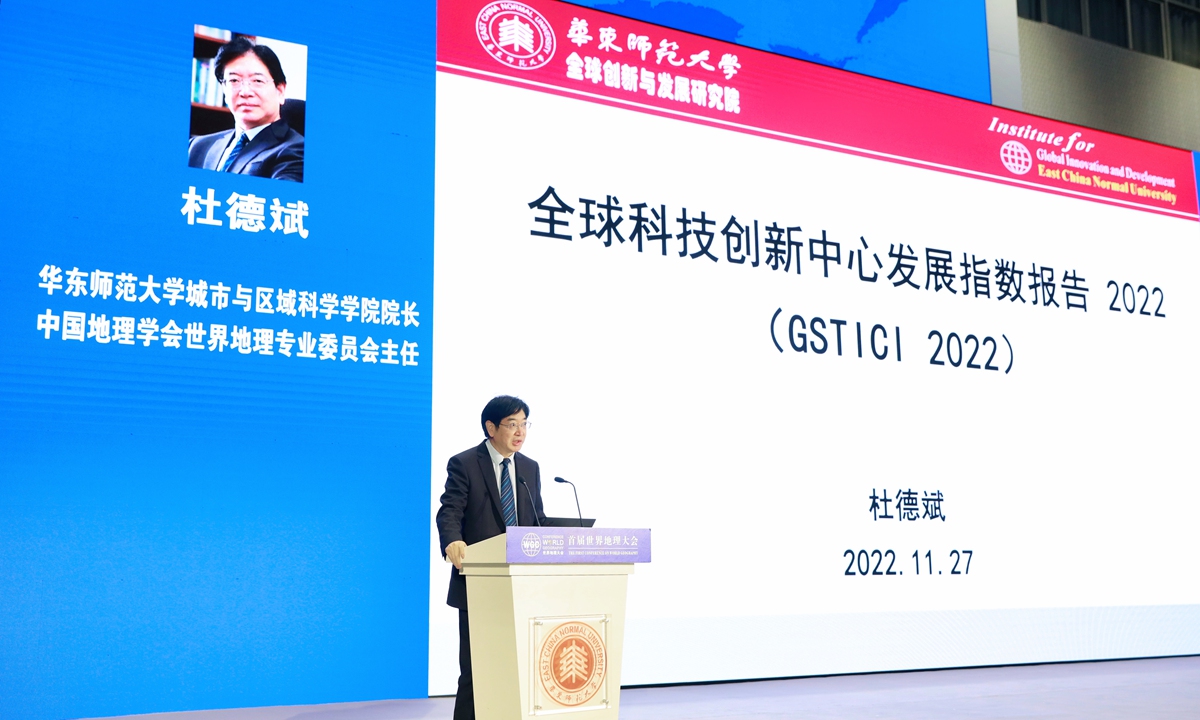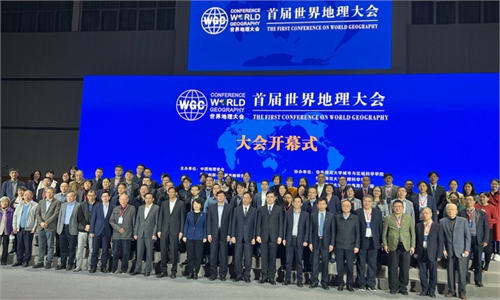5 Chinese cities rank in top 30 in latest global science and technology innovation index

Du Debin, dean of the School of Urban and Regional Science, East China Normal University, delivers the Global S&T Innovation Center Index 2022 during the The First Conference on World Geography on November 27, 2022. Photo: Courtesy of Du Debin
Beijing has surpassed Boston in the US and ranked in the top 5 in science and technology innovation in the global sphere and Shanghai is also in the top group in an individual indicator, a recently released index report shows.
Three other Chinese cities including Shenzhen, Hangzhou and Guangzhou also ranked the top 30 cities of science and technology innovation, according to the Global S&T Innovation Center Index 2022 released for the first time by the Institute for Global Innovation and Development of East China Normal University during the First Conference on World Geography held recently.
The report evaluates the level of technological innovation and development of 130 cities in 45 countries from six continents around the world from five dimensions including global clustering abilities of innovation factors, global leadership of scientific research, global original breakthroughs of technological innovation, global driving force of industrial transformation and global support of innovation environment.
It is noteworthy that among the top 100 science and technology innovation centers, 26 cities are from the US, six more than those from China and 13 cities from the US rank in the top 30.
From the perspective of the five dimensions, the San Francisco-San Jose region in the US is the world's top scientific and technological innovation center with not only its comprehensive ranking top the list but also ranking the first for three indicators.
China's capital Beijing ranks the first in the dimension of the global leadership of scientific research while New York from the US ranks first in the dimension of global support of innovation environment.
The report shows that the global innovation centers form a situation of tripartite confrontation situation among Europe, North America and Asia Pacific regions. Among the top 100 innovation centers, 34 are located in Europe, 30 in North America and 29 in Asia Pacific.
Furthermore, among the top 30 innovation centers, 13 are located in North America and nine are located in the Asia Pacific region. Both two regions have four cities respectively ranking in the top 10.
According to Du Debin, dean of the School of Urban and Regional Science, East China Normal University, who delivered the index report, only two European cities made the top 10, showing a lack of innovation momentum while North America continues to excel in innovation. The Asia-Pacific region is the best performer in the global driving force of industrial transformation but remains weak in the global support of innovation environment.
The index report also shows that China's global science and technology innovation centers are concentrated in the Beijing-Tianjin-Hebei region, the Yangtze River Delta and the Guangdong-Hong Kong-Macao Greater Bay Area. Half of the 20 Chinese cities that rank the top 100 on the index are located in the three regions.
According to the report, compared with the top global science and technology innovation centers in the US and Europe, China's innovation centers still have many weaknesses in terms of outstanding innovative talents, top scientific research bodies, innovation engine enterprises, high-quality innovation achievements, international science and technology cooperation and innovation environment construction.
The report suggested to coordinate the development of international and regional science and technology innovation centers, work hard to strengthen the weakness and enhance the strengths, and further focus on training talents and cultivating innovative bodies and optimize the environment for innovation.

